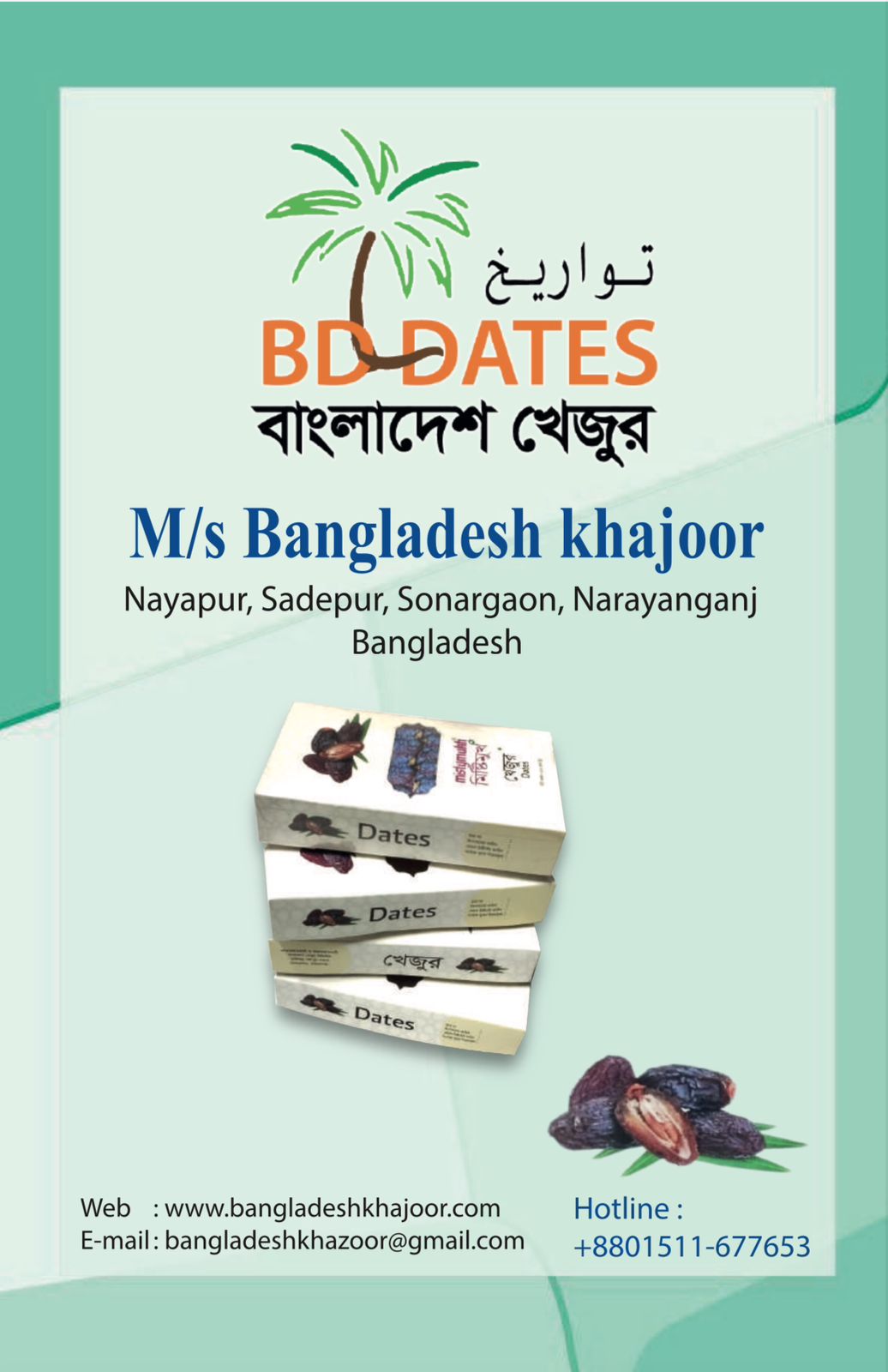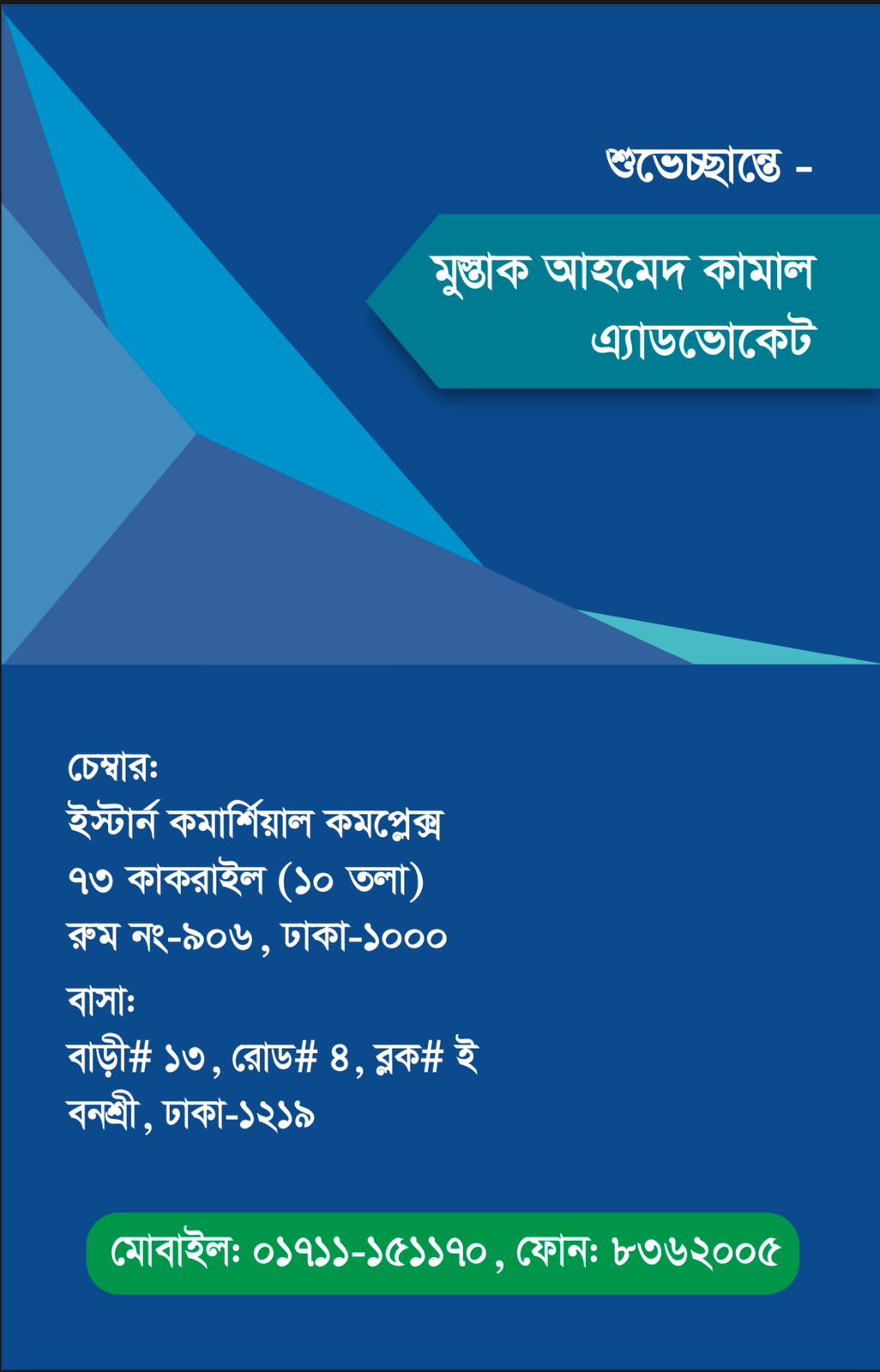Ecosystem Goods & Services (EG&S) in Bangladesh
Ecosystem Goods & Services (EG&S) in Bangladesh
-A Review of the unattended benefits of Natural Resources
Suriya Ferdous
Postgraduate in Environmental Science
National Consultant, Rio Conventions Project,
United National Development Program (UNDP), Bangladesh
Email. suriya.ferdous@gmail.com
Murtaza Khan Lodi
Postgraduate in Anthropology
Natural Resource Management and Organic Farming Specialist
Email. murtaza.lodi@gmail.com
ABSTRACT
Majority of the world’s population depend on their surrounding landscapes for multiple ecosystem good and services (EG&S) that underpin their livelihoods. The utilization and values of EG&S from solar, air, water, food, medicine, raw materials, timber etc supply to biodiversity conservation towards sustainable development have set mutual phenomena across and within different settings to human society. Ecosystems, either for productive or protective purposes, also have the potential to mitigate land degradation, meet demand for environmental regulating services such as Carbon sequestration, water regulation and air filtration, and for cultural services such as recreation and spiritual values. With broad 05 types of ecosystem diversities further categorized in 25 bio-ecological and 30 agro-ecological zones, Bangladesh is provided boundless supplies of natural good and services from its geo-morphological setting, physiographic benefits and numerous biological diversities in forests, rivers, estuaries and marine. The importance and values of EG&S in Bangladesh have been in the centre of discussion and this is expected to continue with the alleviated growth of population and standard of living and as the crucial drivers for achieving the sustainable development goals.
INTRODUCTION
The importance and value of ecosystem goods and services are now widely acknowledged for its positive role in planet, people, and prosperity – three main pillars of sustainable development. The implication has been linked to policy and decision making as an innovative strategy for the improved management of land, water, and living resources that can promote conservation and at the same time fostering human well-being. Fair understanding of the connection and transfer between the EG&S and human and/or living beings is necessary for making the actual perception on the whys and wherefores the EG&S has no alternatives to the earth’s survival and sustaining. Terms of definitions below provide ideas of the nature, functions, and connectivity of different environmental units.
Environment[1]: includes water, soil, air, flora, fauna, and “all those elements which in their complex inter-relationships form the framework, setting and living conditions for mankind, by their very existence or by their impact”. Environment is defined by including
- Ecosystems and their constituent parts
- All natural and physical resources
- Social, economic, aesthetic, and cultural conditions which affect the environment or which are affected by changes to the environment.
Ecosystem[2]: The biotic community and the abiotic environment interact and function together as a system called the ecological system or ecosystem. The elements of abiotic (non-living environment) are air, water, soil, and the basic elements and compounds of the environment: climatic regime and physical factors (Temperature, Relative Humidity etc), inorganic substances (water, Carbon, Nitrogen, Sulphur, Phosphorus, etc), and organic substances (proteins, carbohydrates, lipids, etc). The biotic components are comprised of: producers (largely green plants), consumers (chiefly human and animals), and decomposers (mainly microorganisms like bacteria, fungi, etc).
Biological Diversity[3]: or biodiversity means the variability among living organisms from all sources including, inter alia, terrestrial, marine, and other aquatic ecosystems and the ecological complexes of which they are part: this includes diversity within Species, between Species and of ecosystems. Biodiversity is therefore, the sum of all life on our planet includes all the different Species of plants, animals and micro-organisms (Species diversity), all the genetic variability within these Species (genetic diversity) and all the diversity of the ecosystems formed by the different combinations of Species (ecosystem diversity). According to the Millennium Ecosystem Assessment project[4], biodiversity is a necessary underlying component of ecological goods and services, whereas biodiversity itself is also sometimes referred to as an actual EG&S.
These units of nature are intrinsically linked with one another collectively caters the constituents of sustainable environmental management and ensures human well-being at the end. This review article tends to briefly highlight the unattended services, goods, and drivers of the environment, which are valuably incorporated to the human benefits.
ECOSYSTEM GOODS & SERVICES – The Millennium Ecosystem Assessment has defined[5] Ecosystem Services as “the benefits people derive from ecosystems”. Besides providing services or goods like food, wood and other raw materials, plants, animals, fungi and micro-organisms provide essential regulating services such as pollination of crops, prevention of soil erosion and water purification, and a vast array of cultural services, like recreation and a sense of place. The ranges of natural environment and ecosystem resources are utilized as ecosystem goods and services for the sake of human benefits are presented below.

Key Ecosystem Goods and Services from natural resources
Ecosystems are also expected to play a key role in achieving recently adopted, global restoration targets such as the Bonn Challenge (to restore 150 million ha of degraded and deforested land by 2020)

Figure 2: Linkages between ecosystem and human well-being[6]
The New York Declaration on Forests as well as the objectives of Article 5 of the Paris Climate Change Agreement[7]. As a whole, ecosystems have the potential to provide a wide array of goods, services, ecological functions, as well as direct benefits to society and the environment. The linkages and translation between ecosystem structure, ecological function (including supporting services), and ecosystem services are highlighted in the following illustration.
ECOSYSTEM GOODS & SERVICES: BANGLADESH FACTS
On the basis of both biotic and abiotic components of ecosystems, the world is divided into five Global Ecological Domains and 20 Global Ecological Zones (GEZs). Bangladesh belongs to two of these zones, viz. Tropical Rain Forest GEZ (33%) and Tropical Moist Deciduous Forest GEZ (67%) of the Tropical Domain of the Global Ecological Domains. The central, north-eastern and south-eastern forests belong to Tropical Rain Forest GEZ[8].
Bangladesh is categorized under five broad Ecosystem Diversity[9]: Forest Ecosystem, Wetlands Ecosystem, Homestead Ecosystem, Coastal and Marine Ecosystem and Agro-ecosystem hosting 40 protected areas, 13 ecologically
Critical areas, and 25 bio-ecological zones[10]. The country is also living place of coastal and marine biodiversity with the estimated richness[11] as follows:
- 4,500 Species Invertebrates
- 3,733 plant Species
- 3,611 taxa of Angiosperms
- 706 Species birds representing 7.2% world’s bird population
- 442 Species Fish, 36 Species marine Shrimp
- 336 Species Mollusk – Snail, 03 Species Lobsters
- 100 Species migratory shore Birds and 76 sp. inland migratory Birds
- 42 Species Mammals, 35 Species Reptiles and 08 Species Amphibians
- 24 Species Snakes, 09 Species Dolphins, 03 Species Whales
- 16 Species Crabs, 03 Species Crocodiles
- 07 Species Tortoises, 168 Sea-weeds
- 03 Species Sponges, 03 Species Otters, 01 Species Porcupines
In line with the abovementioned key EG&S, Bangladesh enjoys marketed goods, materials and non-materials services from the vast natural capitals available in the country’s terrestrial and marine landscape. Natural capital[12], similar to the concept of economic capital, includes the natural environment and ecosystem resources, such as soils, forests, and wetlands that provide environmental assets and services essential to life. Examples of natural capital and the EG&S provided in the country is briefly shown in the following Table-1.
Table 1: Examples of Natural Capital and the EG&S Provided in Bangladesh
| Natural Capitals | Provided Ecosystem Goods and Services in Bangladesh |
| Forests | Carbon sequestration, soil formation, waste treatment, biological control, cultural, air quality, protection from natural hazards, recreation, raw material (timber, bamboo etc), genetic resources, soil repair and fertility, pollution control |
| Grasslands | Carbon sequestration, grazing, water regulation, erosion control, soil formation, waste treatment, pollination, biological control, food production, aesthetics, soil repair and fertility |
| Croplands | Food production and security, habitat of human and Species, refuge |
| Wetlands | Disturbance regulation, water supply and treatment, Carbon sequestration, food production, fisheries, recreation, genetic resources, Species abundance |
| Lakes, rivers, riparian zones | Water supply, fisheries, waste treatment, food production, recreation |
| Coastal, marine, estuarine zones | Habitat protection, Carbon sequestration, disturbance regulation, water supply and treatment, food production, fisheries, coral, sea food etc, recreation, Species abundance, genetic resources, waste decomposition, tourism |
| Mountainous zones | Habitat, food, crops, fruit production, timber and other building raw materials supply, Species diversity, water supply, air quality, protection from natural hazards, cultural values, tourism |
| Under-developed | Scenic, tourism |
In accordance with the international development obligations and global target settings, Bangladesh has made series of big steps progressed fulfilling its commitment in protecting the ecosystems, existing richness in biodiversity, reducing environmental pollution, and thus ensuring sustainable development at community level. Major milestones of Bangladesh achieved by Bangladesh in response to the biological conservation are as follows:
- Inclusion of new Article 18A in the Constitution of the People’s Republic of Bangladesh articulated “ The State shall endeavor to protect and improve the environment and to preserve and safeguard the natural resources, bio-diversity, wetlands, forests and wild life for the present and future citizens”.
- Bangladesh is signed and ratified numbers of international Conventions and Protocols e.g. United National Convention for Biological Diversity (UNCBANGLADESH), Cartagena Protocol on Biosafety, Nagoya Protocol, Convention on International Trade in Endangered Species of Wild Fauna and Flora (CITES), Convention on the Conservation of Migratory Species of Wild Animals, World Heritage Convention, Ramsar Convention, United Nations Framework Convention on Climate Change (UNFCCC) and United Nations Convention to Combat Desertification (UNCCD).
- Bangladesh prepared the 1st generation NBSAP in 2004 as per 2010 Biodiversity Targets and published the 2nd generation NBSAP in 2016 as per Aichi Biodiversity Targets in compliance with the Article 6 of the UNCBANGLADESH in 1992 which called for an overarching framework for implementing the Convention through the development of National Biodiversity Strategy and Action Plans (NBSAP).
- Bangladesh submitted the Fifth National Report to the Convention on Biological Diversity (Biodiversity National Assessment 2015) in 2015.
- Bangladesh has enacted important Acts, Policies, and Rules related to Environment and biodiversity. Key instruments are:
- Bangladesh Biological Diversity Act, 2017
- National Environment Policy, 2017
- Ecologically Critical Areas Management Rules, 2016
- National Agricultural Policy, 2013
- Bangladesh Biosafety Rules, 2012
- Wildlife Protection and Security Rules, 2012
- The National Water Policy, 1999
- The National Fisheries Policy, 1998
- The National Forestry Policy, 1994
- Bangladesh declared and managed ecological critical areas and protected areas and established the innovative livelihoods strategy such as community-based adaptation and mitigation, co-management etc.
- Bangladesh successfully implemented several technical high-value projects involving community participation such as National Capacity Development for Implementing Rio Conventions through Environmental Governance, Community Based Ecosystem Conservation, and Adaptation in Ecologically Critical Areas of Bangladesh (CBA-ECA Project), Integrated Protect Area Co-management, Community Based Eco-System Restoration in the Chattogram Hill Tracts and so on.
ASSESSMENT OF ECOSYSTEM GOODS AND SERVICES
Assessment of EG&S can serve many purposes[13], (i) raising clarity and awareness of the relative importance of the ecosystem to the government, policy makers, investors, non-governmental organizations and local communities, (ii) supporting new opportunities to link the natural resources with markets for identified goods and services, (iii) providing guidance for decision makers in understanding user preferences and relative values that people place on ecosystem services, (iv) generating information for designing new and modifying existing ecosystem so as to maximize their contributions to local communities, broader society and the global environment (v) informing land use planning and (vi) consolidating an efficient use of invested funds by identifying the means the EG&S can achieve greatest benefits.
The importance of the concept ‘ecosystem services’ was elevated by the publication of the Millennium Ecosystem Assessment (MA) in 2005, a work involving over 1300 scientists. A wide spectrum of methods has been proposed to assess the availability and use of provisioning ecosystem services. These include site-scale and landscape-scale modeling, biophysical observations, social-ecological patches and economic studies[14].
Under NBSAP Strategy-1: Recognize the value and importance of biodiversity, Bangladesh also conducted few assessments and valuations of the existing EG&S, mostly completed at project level. As for example, Economic valuations of different ecosystems e.g., Sundarban, Values of Protected Areas (PAs) as well as the documentation of biodiversity etc.
CONCLUDING CONSIDERATION
Although there are ecological, cultural and economic importance of these goods and services, the ecosystems and biodiversity are still being degraded and lost at an unprecedented scale. One major reason for this is that the value (importance) of ecosystems to human welfare is still underestimated and not fully recognized in every day planning, management and decision-making, in other words, the benefits of their services are not, or only partly, captured in conventional market economics. Valuation (assessment) can be done in different ways as valuation needs to be driven by local needs, by means of assessing the total contribution that ecosystems make to human well-being.
Standard operating procedure, certification of responsible ecosystem management is a demand of present age of Rio+20. Proper assessment of the EG&S and subsequent documentation, reliable monitoring, maintenance guarantee, embedded knowledge co-generation still call for effective actions from the government of Bangladesh. Inclusive and participatory monitoring of ecosystem goods and services may have a large potential, especially in local and data scarce environments where conventional data and knowledge generation practices may not be sufficient to support policy and practice. Participatory data and knowledge co-generation may not only support a better management of ecosystem but also their adaptive use for improving local livelihoods.
The magnitude of available EG&S in Bangladesh is close to unlimited; unfortunately, with the huge burden of bulging population in small country, the goods and services provided by the environment remained unattended. Consequently, pollution never ended, lands are still degraded, more Species enlisted as endangered, forest cover is lowered than the national mandatory requirements, and natural hazards occurred more frequent unprecedented. It’s a high time to call for another integrated environmental management action so that a long-lasting linkage among service provider (ecosystem) – provision (goods and services) – service receiver (individual) can be on place.
References:
[1] Ahmed S, Dr, 2018. Environment, Ecosystem, Biodiversity, Climate Change Issues and Management presentation made in the Training and Trainers on Rio Conventions, Dhaka, Bangladesh.
[2] Ahmed S, Dr, 2018. Environment, Ecosystem, Biodiversity, Climate Change Issues and Management presentation made in the Training and Trainers on Rio Conventions, Dhaka, Bangladesh.
[3] DoE, 2018. Training Module on Rio Conventions, Rio Project, Department of Environment (DoE), Ministry of Environment and Forests (MoEFCC).
[4] https://en.wikipedia.org/wiki/Ecological_goods_and_services#Biodiversity_and_EGS data taken on 28 April 2018.
[5]https://www.iucn.org/commissions/commission-ecosystem-management/our-work/cems-thematic-groups/ecosystem-services data taken on 28 April 2018.
[6] Illustrated by the Author with inspiration from collection sources: Jennifer T. et al, 2017. Incorporating ecosystem services into environmental management. Volume 137, March 2017, Pages 486-503; and Ahmed S, Dr, 2018. Environment, Ecosystem, Biodiversity, Climate Change Issues and Management presentation made in the Training and Trainers on Rio Conventions, Dhaka, Bangladesh
[7] Himlal Barala, C, Manuel R., Guariguatab, Rodney J. Keenanc, 2016. A proposed framework for assessing ecosystem goods and services from planted forests. Ecosystem Services 22 (2016) 260–268, Elsevier.
[8] Department of Environment, 2015. the Fifth National Report of Bangladesh to the Convention on Biological Diversity. Department of Environment, Ministry of Environment and Forests, Government of the Peoples Republic of Bangladesh.
[9] https://www.thebangladesh.net/bio-ecological-zones-of-bangladesh.html#info data taken on 26 April 2018.
[10] Nishat, A., S.M. Huq, B. Imamul., P. Shuvashish, A.A.H.M Reza, and M.A.S. Khan (eds.), 2002. Bio-ecological Zones of Bangladesh. IUCN Bangladesh Country Office. Dhaka, Bangladesh.
[11] Ahmed S, Dr, 2018. Environment, Ecosystem, Biodiversity, Climate Change Issues and Management presentation made in the Training and Trainers on Rio Conventions, Dhaka, Bangladesh. and Department of Environment, 2015. the Fifth National Report of Bangladeshto the Convention on Biological Diversity. Department of Environment, Ministry of Environment and Forests, Government of the Peoples Republic of Bangladesh.
[12]https://www.gov.mb.ca/agriculture/environment/ecological-goods-and-services/index.html data taken on 25 April 2018
[13] Himlal Barala, C, Manuel R., Guariguatab, Rodney J. Keenanc, 2016. A proposed framework for assessing ecosystem goods and services from planted forests. Ecosystem Services 22 (2016) 260–268, Elsevier.
[14] Laura Vang Rasmussen, Ole Mertz, Andreas E. Christensen, Finn Danielsen, Neil Dawson, Pheang Xaydongvanh, 2016. A combination of methods needed to assess the actual use of provisioning ecosystem services Ecosystem Services 17 (2016) 75–86.}]
















